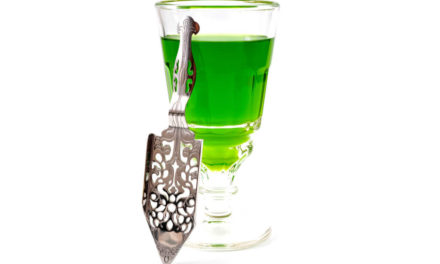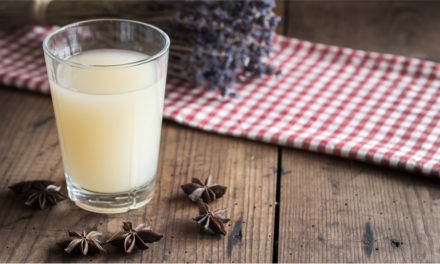I am sure you have already tried crepes. You can find this gourmandise all over the world, in America, Africa or Asia, and of course in Europe. But did you know that its origins are French? I’m sure you’ve heard of it already.
And… yes, that’s right. The origin of the crepe is French. Well, we should mention that its origins can be traced back to the invention of bread by civilisation and that’s well… we’re going way back in history to the Middle East today.
But the first traces of the modern crepe as we know it today can be found in the hexagon. To determine this, we must indicate what a crepe is.
What is a crepe?
A crêpe is a composed dish, usually in a circular shape, with a very thin volume. It is made of flour, eggs, and milk.
That’s all. That’s a crepe. Sounds simple, doesn’t it? Well, it is precisely its simplicity, but at the same time its exquisiteness and versatility that has conquered the world. But like all recipes, they evolve over time. It wasn’t always like this.
The origins of the French crepe.
As we said, the crepe originated in France. Anyone who has visited the country knows that no matter where you go, you will always find a creperie (a restaurant that specialises in selling crepes).
Although Brittany is considered to be the birthplace of the crepe, there is no historical evidence that the crepe was invented in Brittany. For those unfamiliar, Brittany is a region in the north-west of the hexagon, known for cider (apple-based alcoholic beverage).
The first written mention of modern crepes dates to the 13th century, in the book Le Tretiz, written by a French-English gentleman, Walter de Bibbesworth. A century later another book appeared in Paris, Ménagier de Paris, which contained the first recipe for crepes. This one indicated that instead of milk or water you should use wine, can you imagine? what could be more French than using wine in your recipe, right? In the following video they detail a little more of the story we have just told you (It’s in French).
The basics for a delicious French crêpe batter.
Fast forward to the 21st century, time will give to this basic recipe thousands of variations to this day. From as simple as sugar to as much as you can imagine.
As indicated the main ingredients are 3, and to make a good recipe you only must memorise the weight ratio of 1 part flour, 0,5 parts eggs and 2 parts milk. To this you can then add sugar, chocolate, etc.
Here is the recipe we make in my family, basic and simple. Honestly, it is approved by all French people who have tried it,
Sweet or savoury crepes: that is the question.
And this is where the Brittany region becomes the leader of the crepe. They have developed such a “savoir faire” over the years that if you are visiting, you must go to one of their famous creperies.
In France they say that the best crepe is the one you like the most. But a popular way for the locals is to eat it only with powdered sugar.
If you want to experiment, here is a small sample of what you can do with crepes,
| Adiciones dulces para endulzar el día | Adiciones saladas que te encantarán | |
| Powdered sugar | Sautéed chicken. | |
| Nutella or other with banana or strawberry | Roasted tomatoes and mushrooms with basil | |
| Chocolate with strawberries or banana | Ham and Alpine cheese (Comté). | |
| Ice cream and toasted walnuts. | Bacon and cheese with onions. | |
| Maple syrup alone or with butter. | Sausage and cheese. | |
| Butter and strawberry jelly or your favourite. | Roast beef. | |
| Yoghurt and fruit with a touch of honey. | Spinach and garlic mushrooms. | |
| Cinnamon, sugar, and butter. | Pesto. | |
| Bee honey. | Turkey, tomato, and lettuce mix. | |
| Mascarpone cream with chocolate. | Goat or ricotta cheese with herbs de Provence. | |
| Cajeta. | Bean purée. |
Alternative methods of cooking crepes for those without a crepe maker
Don’t worry, anyone who has bought crepes in a restaurant or creperie has seen that there are special machines (crepe makers). If you can afford the investment there are homemade versions, but it’s not really necessary, you can always buy a crepe pan or just use any large enough pan.
Ideally, the latter should have a flat bottom and be thick enough, so that the heat is even.
How the French eat crepes: A presentation guide
In addition to the addition, there is also the folding, key in the presentation. It can be:
- Rolled: This is the most traditional. For this, you should obviously not have too many additions, otherwise it would come out at the ends.
- Triangular: The creperies in France often give it to you in a cardboard or paper cone so that you can eat it calmly, it is also a sure way that the extra ingredients will not come out, advice, leave the tip last.
- Square: Often used in restaurants with extras such as ice cream or meats, which should be placed on top.
In the following video you can see how to make these and other folds.
Crepes at any time: How to preserve crepes?
The best thing to do is to prepare the quantity you are going to eat; in the end you will eat it fresh. But we know that sometimes, for various reasons, you want or need to make more. You have two options, refrigerate, or freeze either the crepes or the crepe batter.
How to store crepes
The crepes can be stored 1 day outside or 2-3 days inside the refrigerator. Just leave them on a plate and cover them with plastic wrap. If you decide to freeze them, after separating each one with greaseproof paper to prevent them from sticking together, place them in a freezer bag or container.
To defrost, you can put them in a frying pan over low heat with a little butter to rehydrate them or in the microwave.
How to store crepe batter
If you decide to store the prepared crepe batter, it is stored in the refrigerator in an airtight container for 2 days. The other option is again to freeze it for up to 2 months maximum in a freezer-proof container.
Be careful, if you are going to freeze, do not fill the container to the maximum, as any liquid can break or deform the container during freezing. Then to defrost, always defrost in the refrigerator or with the help of a microwave.
I hope you like it,
Bon Appétit!





